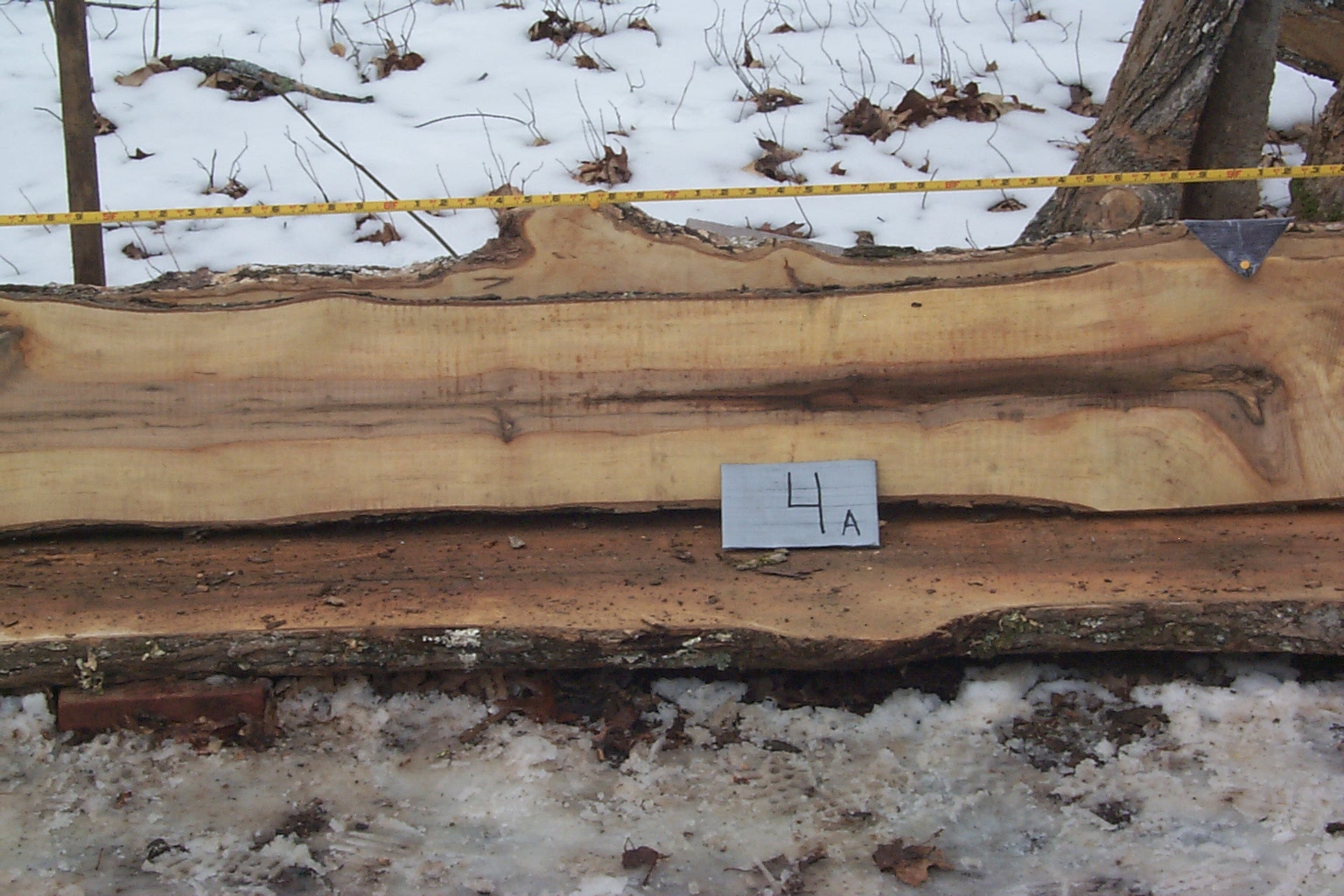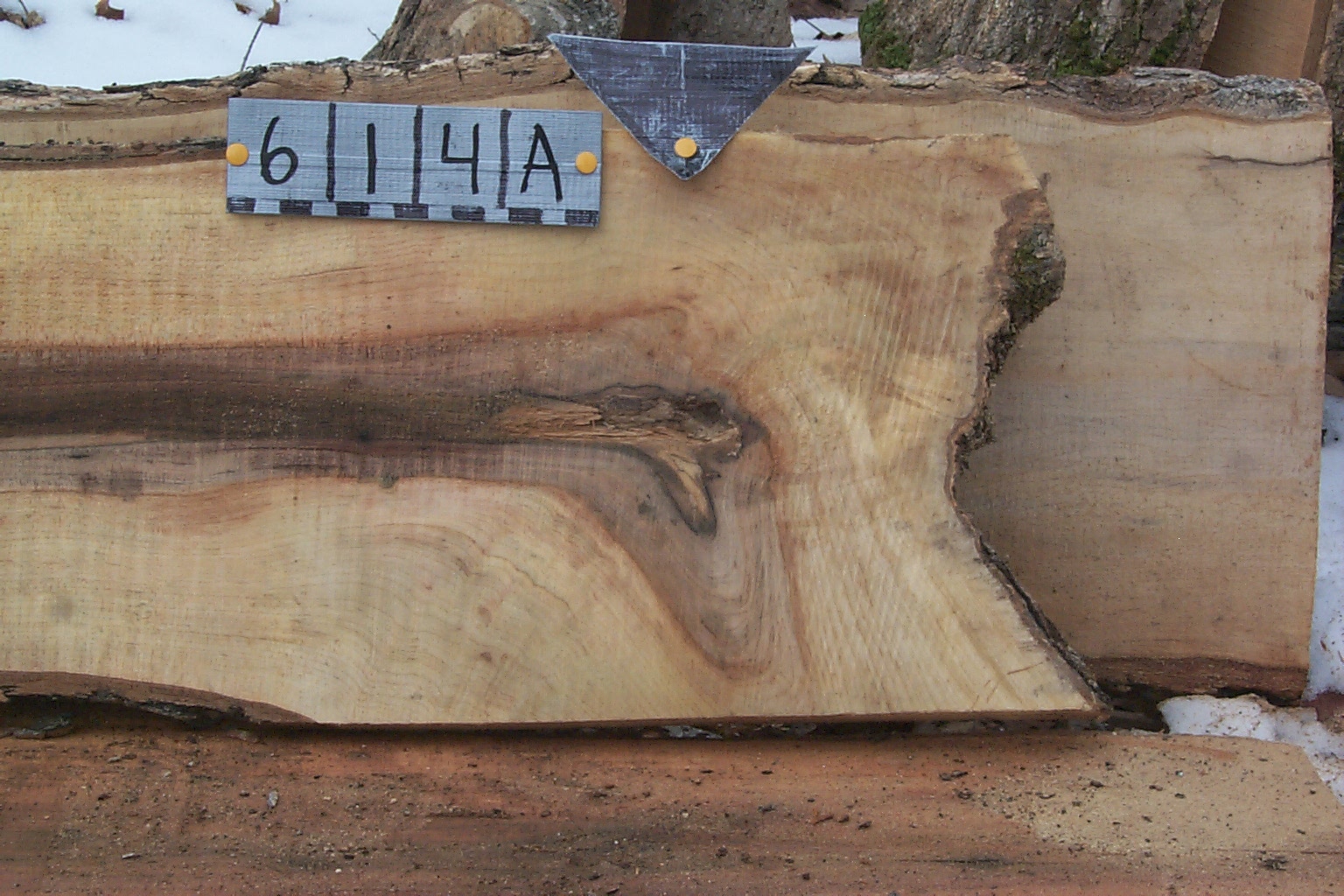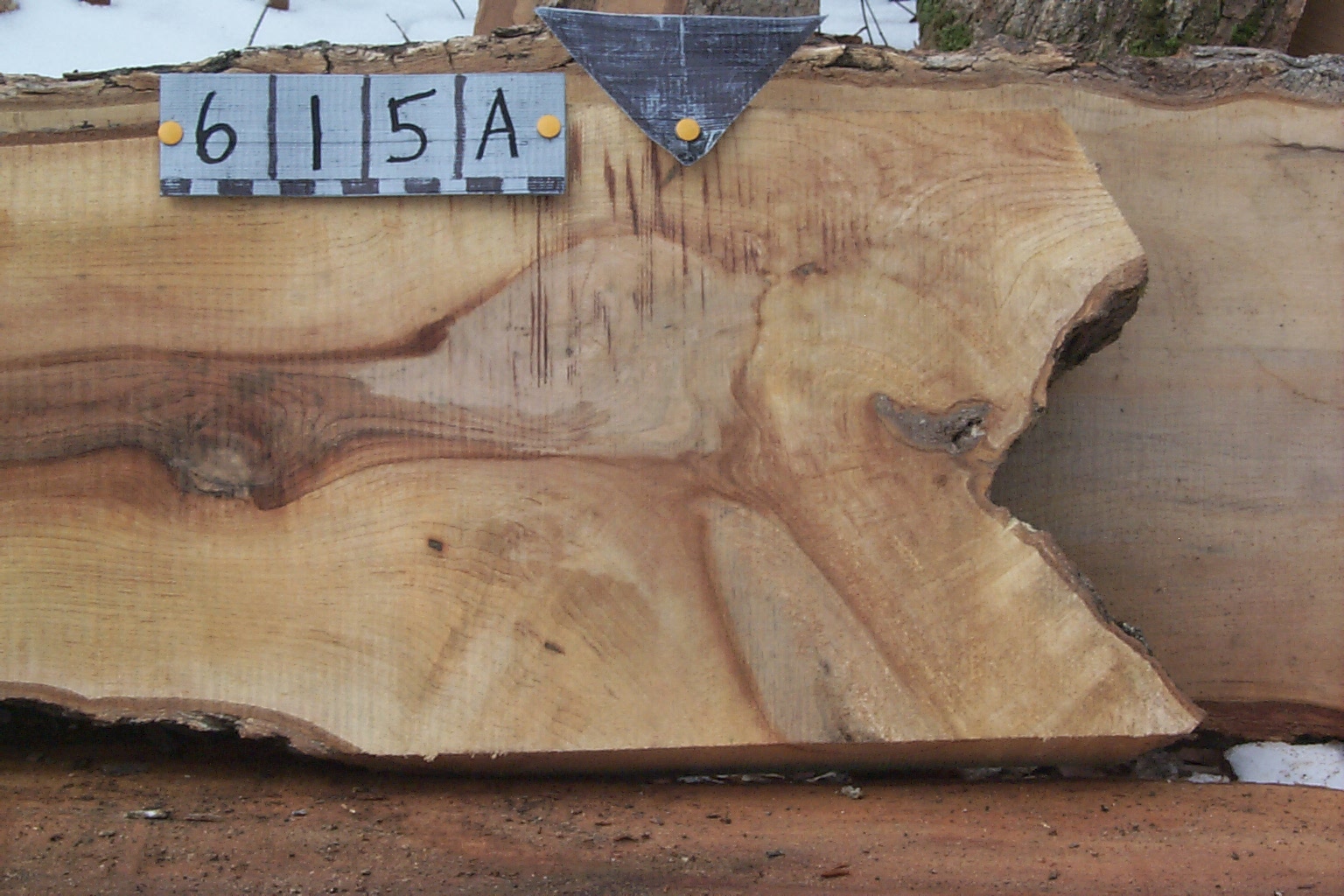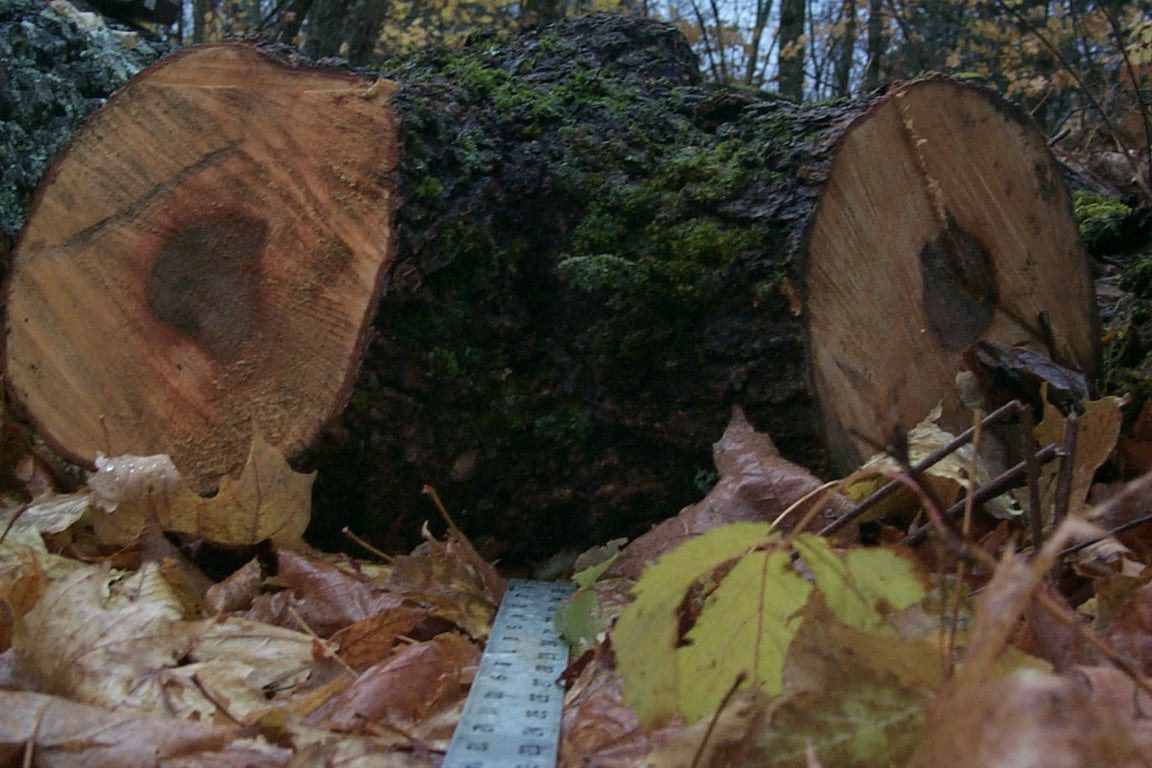
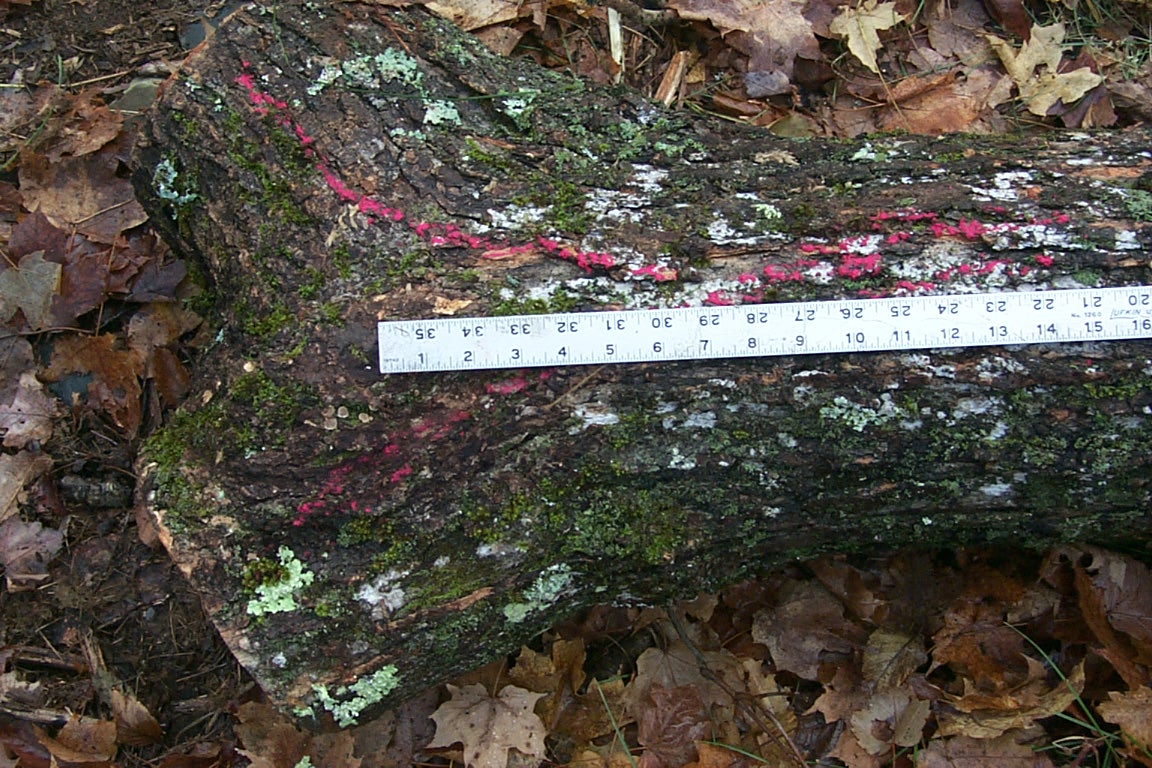
| Home |
| Tutorial |
| Photo Gallery |
| List of Defects |
| Links |
| Bark Distortion |
| Bird Peck |
| Bumps |
| Burls |
| Butt Scars |
| Butt Swells |
| Cankers |
| Conks |
| Epicormic Branches |
| Flanges |
| Flutes |
| Forks |
| Galls |
| Holes |
| Knots |
| Lesions |
| Limbs |
| Ring Shake |
| Rot |
| Seams |
| Soak |
| Splits |
| Wounds |
Significance: A secondary effect of a fork is double pith and, usually, a large bark pocket where the forked stems join. In the forked portion, both the grade outturn and volume yield of any product are reduced significantly. Including a fork on a log of any class is a bucking error.
In veneer logs, including a fork disqualifies the log for veneer production.
In factory logs, a fork markedly reduces both the lumber grade and volume yield and is a log grade defect for which a log-scale deduction must be taken. The log-scale deduction includes any seam and the enclosed bark pocket at the point of forking.
In construction logs, the fork and twin stems are not permitted, and the scaling deduction is taken back to a point below the fork.
In standing trees, a fork is not a degrader if logs can be cut that will fulfill the minimum requirements for the log class.
